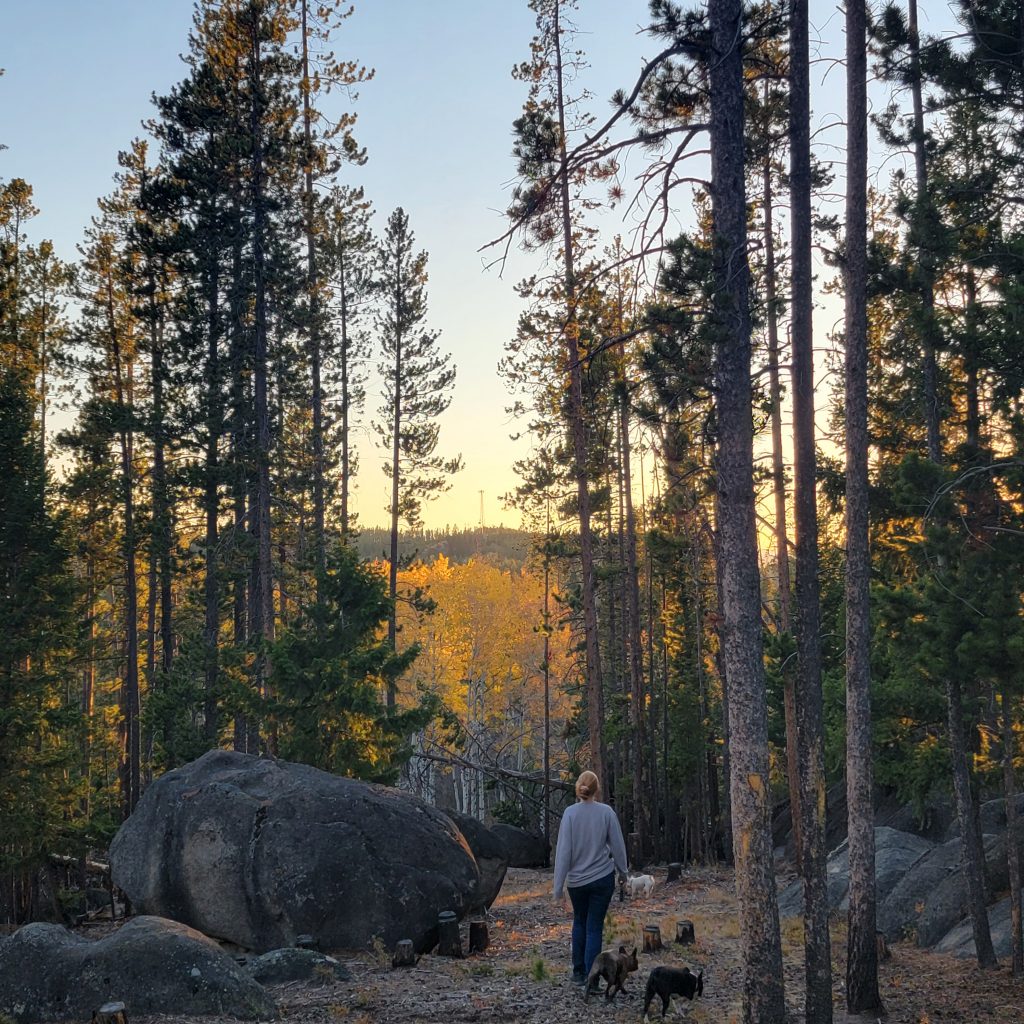One of the questions we’ve been asked a lot is how do you live in a bus with chronic pain. Or, depending on the person, how do you live in such a tiny space with three people and three dogs.
Six months ago my answers were different than they are today. Six months ago I also thought I knew what bus life was. Boy, was I wrong.
Turns out that until you are truly living on the road in a bus for months at a time, you don’t know what bus life takes. Weekends and even weeks at a time are a different beast. There is an expectation of temporary adaptation. When living an undetermined amount of time on the road, the challenge becomes one of quality of life. Temporary adaptation is like a seasonal attitude/perspective/way of life. The longer it is temporary, the harder it is to keep up. At some point it becomes who you are, and in order to have a productive and happy life, you have to change your mindset. With mindset change comes contentment and seeing the good in the not-so-pleasant. You have to learn to live within your situation the best that you can.

That makes it sound like bus life isn’t an easy adjustment. It isn’t. For some it is, and I am inspired by those people. For someone trying to combat several chronic conditions, be a housewife, and run a company, it’s a hard transition.
Ever since my conditions worsened, I’ve had a hard time planning ahead. It’s mostly one day at a time. So when the day came when I found myself on the east coast in massive pain, trying to “embrace life,” I couldn’t imagine doing this permanently.
Between battery issues, solar problems, and the stress that comes with running a company, it’s been a struggle. It has also brought great rewards, once in a lifetime experiences, and better family bonding time than is capable at home.
At home, we can hide. On the road in a tiny space, we can’t. My family has now seen me in so much pain I can’t function; when the only thing I can do is listen to music and cry. They have now seen me unable to get out of bed or stand up after sitting. At home I can shut myself away so they only see what I let them them see. When you have a condition that will quite happily throw you under a bus and then throw you into a pain flare for weeks at a time, what little control you have left is held onto like a lifeline. Seeing my family process the pain that I am really in on a daily basis is almost as hard as the pain. Some days it’s worse. I feel like a burden; like a handicap.
So why would I still be interested in bus life if hiding at home is where the comfort is?

Because with my vulnerability comes the strength of a family.
Do you remember the saying, “Seeing is Believing?” And the infamous, “Believing is Seeing,” from The Santa Claus with Tim Allen? I believe that bus life allows my family to see me in a way that allows them to truly believe that what I’m going through is legitimate. I also believe that that seeing will allow them to believe when they can’t see in the future, whether because I’m trying to protect them by hiding, or because life is providing distractions. I didn’t believe that they saw me until this jaunt across the country.
So while bus life has it’s nonstop challenges, there is also great enlightenment and growth that just doesn’t happen in the stale atmosphere of home. Every day is different, from opportunities to challenges, and it’s full of chances to learn, to grow, and to become.
As someone with chronic pain, it’s especially important because it gives me motivation not to give up. Seeing people’s hobbies and how they live such different lives, on top of different places and outlets, it’s encouragement to keep going. Even though you’re bouncing from place to place, somehow time moves slower and you’re able to stay focused on the small things. When dealing with pain and fatigue, sometimes small things are all you have. Bus life reminds you that that’s what life is truly about, and most importantly, reminds me not to feel ashamed because my life is different. It’s who I am. Bus life taught me that.


